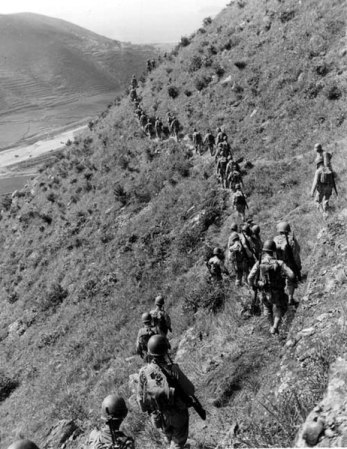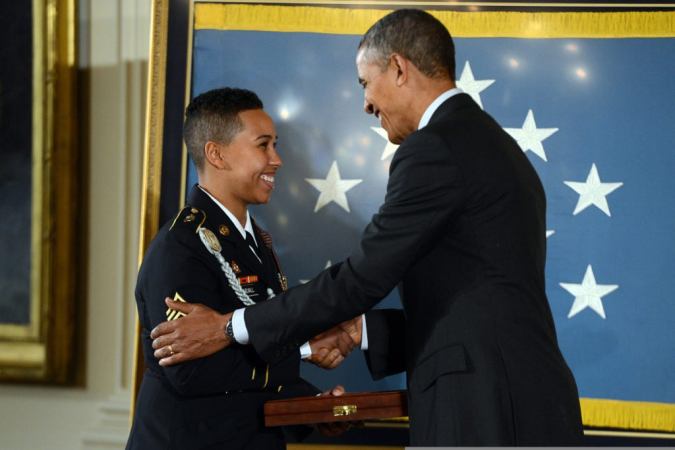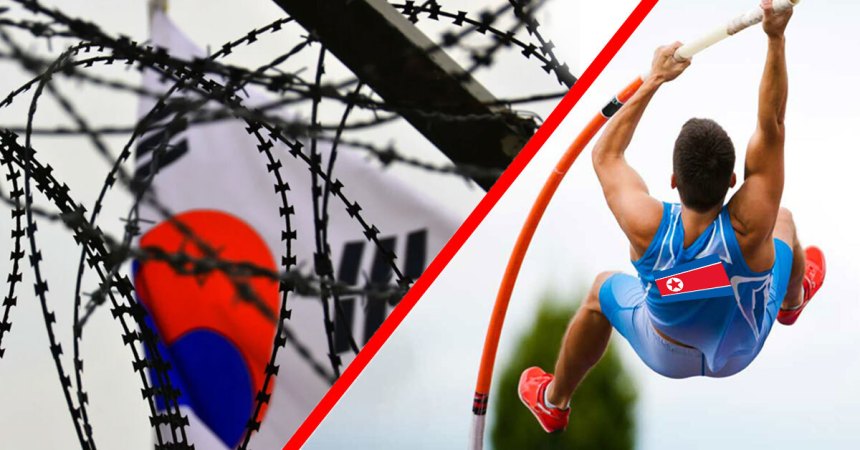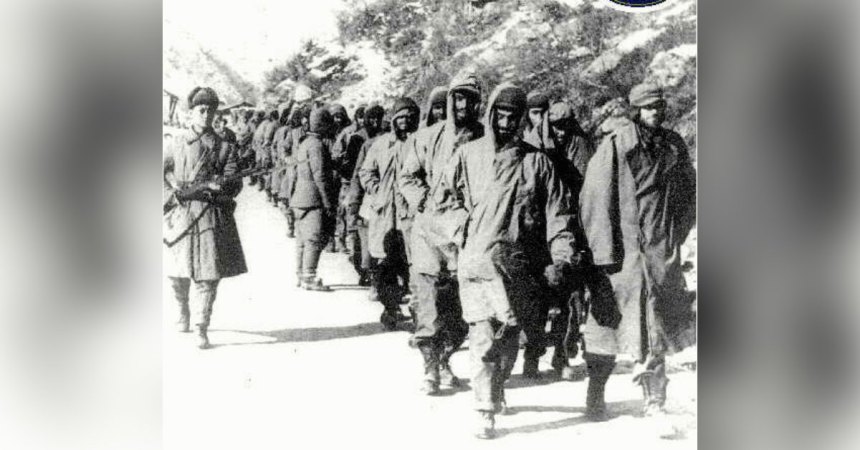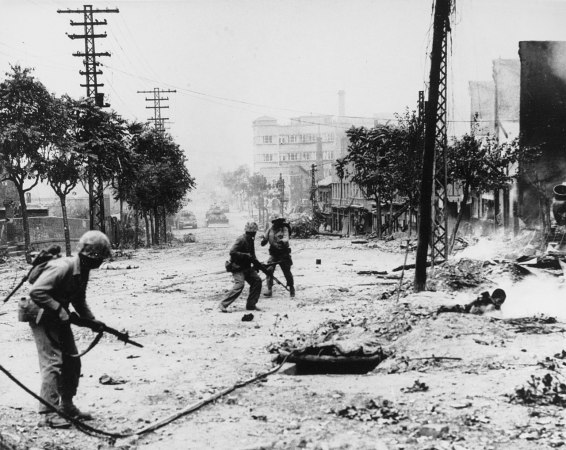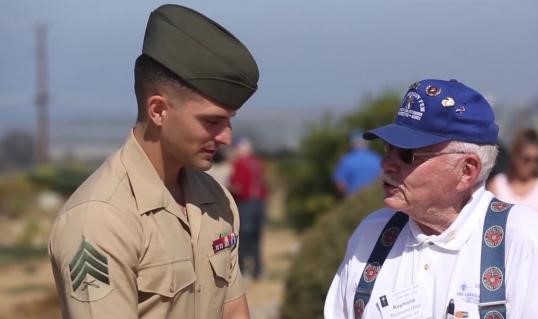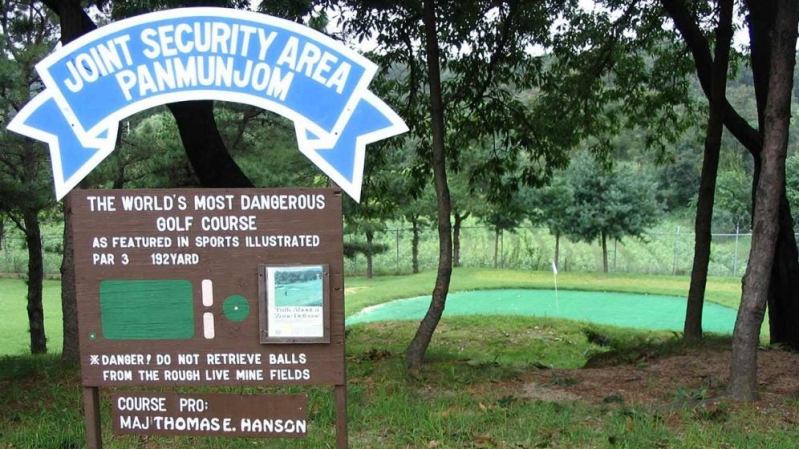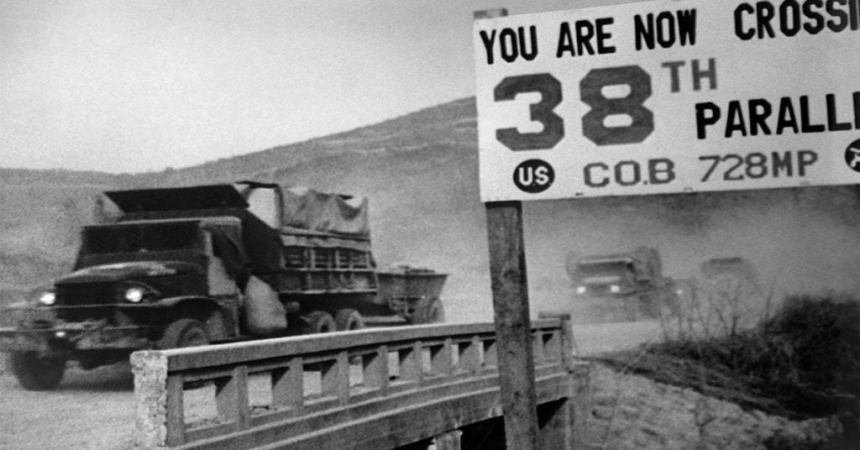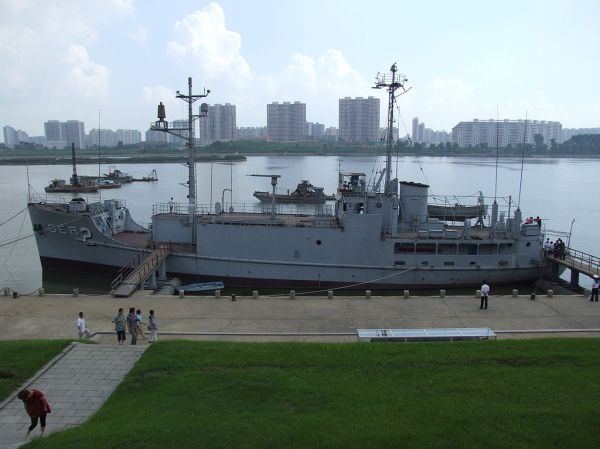This past week, the 65th anniversary of the Korean Armistice Agreement, saw the return of 55 troops’ remains by the North Koreans to the United States. A U.S. Air Force C-17 flew into Wonsan, North Korea, to pick up the remains before returning them to Osan Air Base, South Korea.
The troops who received the remains wore white gloves and dress uniforms. The remains of the deceased were placed in boxes and each box was draped in the United Nations’ flag — not Old Glory. Now, before you get up in arms about it, know that there’s a good reason for using the UN flag.

And so began the first of many wars between Capitalism and Communism.
(U.S. Marine Corps photo by Cpl. P. McDonald)
The Korean War began on June 25th, 1950, when the North sent troops south of the 38th parallel. Shortly after the invasion, the newly-formed United Nations unanimously opposed the actions of North Korea.
The Soviet Union would’ve cast a dissenting vote if they hadn’t been boycotting participation in the United Nations for allowing the Republic of China (otherwise known as Taiwan) into the security council instead of the People’s Republic of China (communist mainland China). Instead, the Soviets and the communist Chinese backed the fledgling communist North Korea against the United Nations-backed South Korea.

The South Korean loss of life totaled 227,800 — quadruple every other nation combined.
(U.S. Army photo by Sgt. Brian Gibbons)
Historically speaking, the United States was not alone in fighting the communists. Nearly every UN signatory nation gave troops to the cause. While America had sent in 302,483, the United Kingdom sent 14,198, Canada sent 6,146, Australia sent 2,282, Ethiopia sent 1,271, Colombia sent 1,068 — the list continues.
South Korea contributed almost doubled the amount of every other nation combined at 602,902, which doesn’t include the unknown number of resistance fighters who participated but weren’t enlisted. These numbers are astounding for conflict often called “the Forgotten War.”

Since then, nothing has really changed except the regimes.
United Nations troops fought en masse against the communist aggressors. The North had pushed the South to the brink, reaching the southern coastal city of Pusan by late August 1950. When United Nations forces entered the conflict at the battle of Inchon, the tides shifted. By late October, the battle lines had moved past Pyongyang, North Korea, and neared the Chinese border in the northwest.
It wasn’t until Chinese reinforcements showed up that the war was pushed back to where it all started — near the 38th parallel. These massive shifts in held territory meant that the dead from both sides of the conflict were scattered across the Korean Peninsula by the time the armistice was signed on July 27th, 1953.

North Korea hasn’t been much help as even they don’t always know which battle the remains were from. Which, you know, could have at least been a start.
(U.S. Air Force photo by Senior Airman Kelsey Tucker)
The first repatriation of remains happened directly after the war, on September 1st, 1954, in what was called Operation Glory. Each side agreed to search far and wide for remains until the operation’s end, nearly two months later, on October 30th. 13,528 North Korean dead were returned and the United Nations received 4,167 — but these numbers were only a portion of the unaccounted-for lives. America alone is still missing over 5,300 troops. South Koreans and UN allies are missing even more.
Over the years, many more remains were found and repatriated. Throughout the process, South Korea was fairly accurate in the labeling and categorizing of remains. North Korea, however, was not. To date, one of the only written record of Allied lives lost behind enemy lines comes from a secret list, penned by Private First Class Johnnie Johnson.
His list — a list he risked his life to create while imprisoned — identified 496 American troops who had died in a North Korean prisoner-of-war camp. Though this list has been the basis for some identifications, it accounts for just one-fourteenth of American missing fallen.
Today, the names, nationalities, and service records of a still-unknown number of fallen troops have been lost to time.
Of the 55 remains transferred this week at Wonsan, none have been identified. There is no way of knowing who that troop was, which country they were from, or, to some degree, if they were even enlisted at all. Until they are properly identified, they will be covered by the United Nations’ flag to show respect, regardless of which nation they served.






